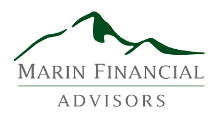What’s Been Happening?
Regular readers of this portion of the quarterly review have repeatedly been exposed to the fairly reliable stock market mantra: “prices follow profits”. Reported profits of the S&P 500 companies exceeded expectations in the third quarter and grew by 21.2% over the third quarter of 2005, according to the Wall Street Journal. That boosted the S&P 500’s record number of consecutive quarters of double digit year-over-year earnings gains to 18, roughly corresponding to the finish of the Bear Market (2000-2002) that it seemed would never end. The upward trend has created optimistic momentum.
Trends to be Aware of
The bond market is sending out a nervous signal, in that short-term rates (3 month Treasury Bills) have exceeded long-term rates (10 and 30 Year Treasury Securities) for almost six months. Normally, investors require higher interest for an investment that locks up their money for a longer period of time. An “inverted” yield curve causes worry because in the past it has been a reliable predictor of upcoming recessions.
Whether the yield curve foretells a coming recession isn’t knowable in advance. Globalization of capital markets has created new sources of cash and it is argued that this large pool of non-US cash is providing increased demand for US Govt. bonds and that demand is holding down rates.
A review of Hedge Fund Research Inc.’s indices reveals that hedge funds as a group continue to underperform the major equity indices. 2006 marked the third year in a row of single digit returns for most hedge fund indices. This is certainly not the outcome hedge fund investors anticipated and pales in comparison to the 3-year returns for the traditional indices displayed below. Perhaps we have tripped across the reason that 1,000 hedge funds closed last year.
What To Expect From Here
We read that the majority of money managers are optimistic about 2007. However, it is realistic to expect the earnings momentum to pause and temper at some point. Expectations of lower future profits will lower the prices investors are willing to pay for securities. Corrections happen.
Real Estate (REITS) and Emerging Market Indexes now have compounded three-year returns that exceed 25% and 30% per year, respectively. We never expect any asset class to increase in value without a pause, much less at those rates. Clients with taxable accounts might expect to pay some taxes on gains this year (remember, gains are a good thing) as our rebalancing discipline leads us to sell off SOME of what has done best recently and REINVEST the proceeds into what have been lower performing asset classes.
Some Numbers for Comparison:
The following table compares the main indices against which fund performance is measured. All figures are for the periods ending 12/31/2006.
|
Index |
What it Measures |
Last 3 Mos. |
Last 12 Months |
3 Years, Annlzd |
5 Years, Annlzd |
|
Standard & Poors 500 |
U S Stocks w/div |
6.70% |
15.80% |
10.43% |
6.19% |
|
Russell 2000 |
Small Stocks |
8.90% |
18.35% |
13.55% |
11.38% |
|
Morgan Stanley EAFE |
Foreign Stocks |
10.40% |
26.86% |
20.41% |
15.43% |
|
MSCI Emerging Mkts |
Emerging Mkts |
17.64% |
32.59% |
30.98% |
26.98% |
|
Real Estate Inv Trusts |
Real Estate |
9.47% |
35.05% |
25.85% |
23.20% |
|
Lehman 1-5 yr Govt/Cr |
Bonds |
1.01% |
4.24% |
2.34% |
3.42% |
|
CPI |
Inflation |
-0.69% |
2.39% |
3.02% |
2.66% |
Source: Thompson Financial

